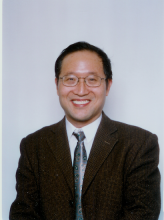The Department of Applied Mathematics is pleased to host this series of colloquium lectures, funded in part by a generous gift from the Boeing Company. This series will bring to campus prominent applied mathematicians from around the world.
Name: Zhilin Li
Date: October 28th, 2021
Location: (SMI 205)
Title: Augmented Methods for Stokes-Darcy FSI Problems & 4th-order Compact Schemes for Flux Type BCs
Abstract: In this talk, a decoupling method is introduced for a fluid structure interaction (FSI) problem between a fluid flow modelled by the Stokes (or Navier-Stokes) equations and a porous media modelled by Darcy’s law. Such a model has many applications including oil industry and mathematical biology. The idea is to introduce several interface variables so that the problems can be solved through several Helmholtz/Poisson equations for which a fast Poisson solver can be utilized. The augmented variables that have co-dimensioned one compared with that of the velocity and pressure are chosen so that the BJS conditions are satisfied. Numerical examples are also presented. We have showed the equivalence between the original problem and the transformed one.
The second part of the talk is on high order compact (HOC) schemes for flux typed boundary conditions, which is important for many applications, especially for Helmholtz equations with large wave numbers, 3D simulations. Most HOC schemes assume Dirichlet boundary conditions. It is challenging to develop HOC schemes for flux boundary conditions (Neumann/Robin) and is a fundamental issue in computational mathematics. Traditional approaches make use of finite difference operators, which may not work for general boundary conditions. In this talk, we propose some new ideas/strategies to develop high order compact schemes, including Poisson, Helmholtz, diffusion and advection, and anisotropic elliptic equations along with numerical experiments.
Youtube: Watch the talk online here.
